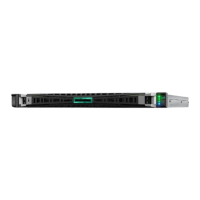a. Select Certificate validation process for every TLS connection.
b. Select a setting:
◦ PEER (recommended)—The certificate presented by the peer is validated for secure
communication.
◦ NONE—Does not validate the certificate.
• To enable or disable strict host name checking:
a. Select Strict Hostname checking.
b. Select a setting:
◦ ENABLE—The host name of the connected server is validated with the host name in the
certificate supplied by the server.
◦ DISABLE—The host name of the connected server is not validated with the host name in the
certificate supplied by the server.
• To specify which protocol version to use for TLS connections:
a. Select TLS Protocol Version Support.
b. Select a setting:
◦ AUTO—Negotiates the highest protocol version that is supported by both the TLS server and
the client.
◦ 1.0—Uses TLS protocol version 1.0.
◦ 1.1—Uses TLS protocol version 1.1.
◦ 1.2—Uses TLS protocol version 1.2.
3. Save your changes.
Configuring Trusted Platform Module options
Trusted Platform Modules are computer chips that securely store artifacts used to authenticate the
platform. These artifacts can include passwords, certificates, or encryption keys. You can also use a TPM
to store platform measurements to make sure that the platform remains trustworthy. For servers
configured with a Trusted Platform Module, TPM enables the firmware and operating system to take
measurements of all phases of the boot process. For information on installing and enabling the TPM
module option, see the user documentation for your server model.
When enabling the Trusted Platform module, observe the following guidelines:
Configuring Trusted Platform Module options 115

